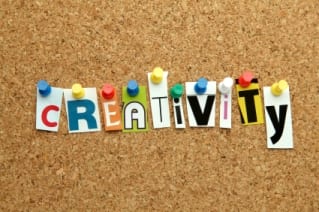Innovation is the lifeblood of progress. Companies hire agencies for fresh perspectives, breakthrough ideas, and disruptive thinking. Every marketing brief calls for something bold and never done before.
Yet, when those groundbreaking ideas arrive, they often meet resistance. The very people who demand creativity are the same ones who hesitate to embrace it. This puzzling contradiction is known as The Creativity Paradox—the simultaneous desire for and rejection of new ideas.
A study from Cornell University, The Bias Against Creativity: Why People Desire but Reject Creative Ideas, explains why this happens. Researchers Jennifer S. Mueller (University of Pennsylvania), Shimul Melwani (University of North Carolina), and Jack A. Goncalo (Cornell University) found that people reject creative ideas for two key reasons:
- Fear of uncertainty. Creativity brings change, and change feels risky. People naturally seek stability, even when they claim to want innovation.
- Difficulty recognizing creativity. Not all creative ideas look creative at first glance. Many great ideas appear strange, impractical, or even threatening until they prove their worth.
So, if we want to break through this bias, we need a strategy to recognize and champion creative thinking.
How to Identify a Truly Creative Idea
At Ketchum, a global communications consultancy, we constantly face this challenge. Clients expect us to deliver creative solutions, but they often struggle to embrace them. That’s why we developed a framework to help assess the true value of an idea.
Here’s a simple checklist:
1. Disruptive, Not Destructive
A great idea challenges norms without breaking what already works. It shifts perspectives but doesn’t create chaos.
✅ Example: Netflix didn’t destroy the film industry—it disrupted traditional cable and changed the way we consume content.
2. Surprising, Not Irritating
Creativity should be unexpected, but not confusing or frustrating. People appreciate fresh angles, but if something is too bizarre or aggressive, it backfires.
✅ Example: Apple’s “1984” commercial was shocking, but it resonated deeply because it framed Apple as a liberator from conformity.
3. Never Done Before—But Familiar Enough
The best ideas blend the new and the familiar. They push boundaries but still make sense within a given context.
✅ Example: Uber introduced a radically new way to hail a ride, but it relied on a familiar concept: calling a cab.
4. Instantly Effective and Memorable
A creative idea sticks. If people don’t remember it, it’s not disruptive enough. If it takes too long to explain, it loses impact.
✅ Example: Nike’s “Just Do It” campaign was simple, bold, and emotionally powerful—it immediately resonated with athletes and non-athletes alike.
5. Easy to Understand, Easy to Evaluate
If an idea is too complex, decision-makers will hesitate to approve it. Creativity doesn’t have to mean confusion. The best ideas can be summed up in one sentence.
✅ Example: Tesla’s mission: Accelerate the world’s transition to sustainable energy. Clear, powerful, and easy to get behind.
The Big Takeaway: Creativity Needs Champions
The problem isn’t that people don’t want creativity—it’s that they struggle to recognize and accept it.
If you’re in a position to bring creative ideas to life, ask yourself:
✔ Are you making space for disruptive ideas?
✔ Are you evaluating ideas with curiosity, not fear?
✔ Are you prepared to embrace uncertainty for the sake of innovation?
A creative idea is . . .
- Disruptive not destructive.
- Surprising not irritating.
- Never done before, but with some familiar elements.
- Instantly effective and memorable.
- Easy to understand and easy to evaluate.

